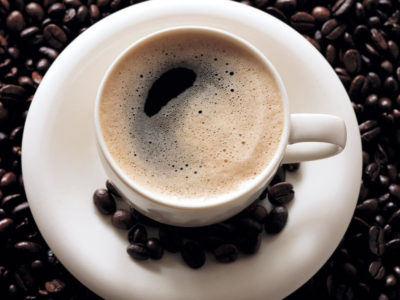Even in current times of economic trouble, it's not uncommon for coffee connoisseurs to pay $4 for their daily cup of coffee. People hang signs in their homes with sayings such as: "sadness is just a lack of cofee." What makes this dark drink so desirable? Whether it's iced, hot, flavored or topped with frothy foam, many people find coffee's appeal in its stimulating and potentially addictive ingredient: caffeine.
Sharon Donovan, a professor of nutrition and health at the University of Illinois (Champaign-Urbana), says caffeine addiction varies depending on how much daily caffeine one consumes.
“Intake of less than 500 milligrams [of caffeine] per day, is generally regarded as safe by the FDA,” Donovan said. “But intake of more than 250 milligrams per day can lead to a condition known as caffeinism.”
Donovan says “caffeinism” usually combines caffeine dependency with a wide range of unpleasant physical and mental conditions including nervousness, irritability, restlessness, headaches and heart palpitations after caffeine use. Sound familiar?
According to an article by nurse practitioner Holly Pohler in “Medscape News Today,” titled “Coffee Intoxication and Addiction,” caffeine meets all of the requirements of an addictive substance, including dependence, tolerance and withdrawal. And if one does become addicted, Pohler says withdrawal can be awful.
Jesse Sauder graduated in May 2013 from The North American Racing Academy where his major was equine science; he says he feels terrible without caffeine, and sometimes, he even develops a headache. Most days, Sauder says he drinks 4-8 cups of coffee per day, and at his worst, he once drank an entire pot in about 2 hours.
“To feel normal and be wide awake, I have to intake enough caffeine until I develop a ‘caffeine buzz,’” Sauder said. “Without [coffee], my days are rough and long.”
All of this caffeinism talk may have you wondering: how do I prevent caffeine addiction, without saying goodbye to coffee forever? After all, from a student’s perspective, caffeine has some serious pros when it comes to academic performance. It’s understandable why you wouldn’t want to completely cut it out.
“Caffeine is a central nervous system and metabolic stimulant,” Donovan said. “It can reduce fatigue and increase alertness. Some studies have also shown improvements in cognitive function.”
To keep reaping the benefits of the high-energy coffee bean extract without developing a substance dependency, Donovan recommends knowing how much caffeine is in your daily cup of coffee. Because a 16-ounce cup of McDonald’s coffee has only 130 milligrams of caffeine, but the same size cup of Starbucks coffee contains more than double the McDonald’s brew, at 330 milligrams of caffeine.
To reduce your caffeine intake, know which foods and beverages to avoid. Caffeine occurs naturally in a number of foods, including tea, coffee and chocolate. It’s also added to cola drinks and in large amounts to supplements and “energy” drinks, such as “5 Hour Energy.”
“The FDA limits the amount of caffeine in soft drinks to 71 milligrams in a 12-ounce serving,” Donovan said. “However, energy drinks such as Monster Energy and Red Bull have 160 milligrams in 16 ounces and 5-hour Energy has 208 milligrams of caffeine in a 1.9-ounce serving; people can easily exceed the 500 milligram limit.”
While cutting back on coffee may not be the most fun you’ve ever had, Pohler suggests strategies such as tapering off your caffeine intake little by little over a period of time. She also recommends mixing one part energy drink with one part non-caffeinated to wean yourself off of caffeine.
Your ultimate goal? “Move toward replacing high caffeine energy drinks with healthier options such as water, whole fruit juices or caffeine-free beverages,” says Pohler. “Referral to a dietician may provide that extra support for those in need of additional guidance.”
So think twice before reaching for your venti mocha. And if you do decide to splurge, keep in mind the consequences of caffeinism.



















